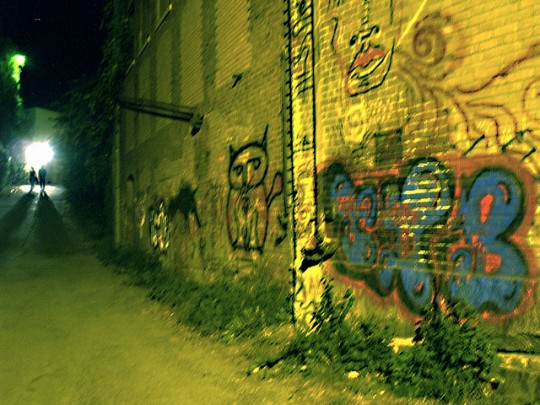I guess I understand the ideological imperative behind refusing to admit that certain neighborhoods are "sketchy." It would mean having to grapple with a number of problematic truths, such as the fact that crime, especially violent crime, tends to be concentrated in certain areas, and that the people who live in those areas are, generally speaking, more prone to commit (and suffer from) crimes, especially violent crimes. It would further mean having to deal with the fact that women are made to feel more uncomfortable in some neighborhoods than others because of the actions of the residents of those neighborhoods.
In other words, labeling a neighborhood sketchy means leveling a value judgment. And some people feel very uncomfortable with judging those who live in high-crime, high-poverty areas.
Sketch Denial, however, is a dangerous thing. Keeping the truth from people about the sketchiness of a neighborhood does nothing to protect them from wandering into neighborhoods that are sketchy—neighborhoods that are, objectively speaking, more prone to suffer from violent crime and other depredations and are, subjectively speaking, filled with people who don't care how uncomfortable they make you feel.
Now, city residents are likely to scoff at designations of "sketchiness." As a longtime resident of D.C.,* I get that: sketchiness in D.C. is more of a block-by-block phenomenon than a neighborhood-by-neighborhood phenomenon. One brief example: When I first moved to the city, I lived about a block away from the Potomac Avenue Metro. One metro stop east was the Eastern Market station. Eastern Market is surrounded by shops and restaurants; it's well lit and there's lots of foot traffic. In other words, it is not particularly sketchy. Potomac Avenue, meanwhile, is also relatively un-sketchy, though a bit more poorly lit and close to a pretty crappy public housing project. But still, not that sketchy. Walking between them, however, entails a four or five block jaunt down a poorly lit portion of Pennsylvania Avenue that is festooned with dark alleys and shares the road with the aforementioned crappy public housing project. That several-block stretch was super-sketchy. It's not terribly surprising, then, that the only time in D.C. I got braced by a pack** of thugs I was walking between Eastern Market and Potomac Avenue at night.
Lesson learned.
Strangers to D.C.—those who are moving to the nation's capital and don't know about such things—lack this sort of situational awareness, however. They have no idea which neighborhoods are any good, let alone which blocks in those neighborhoods are any good. So an app like SketchFactor—which I discussed a bit here—is really quite valuable. Paying eight hundred bucks a month for a tiny room in a horrible part of town where you constantly feel unsafe is a rather dreadful way to go through life. Simply denying that such areas exist will do little to help those trying to navigate their new cities. And it may, in fact, put them at greater danger.
*I moved out of the city this year. I made sure to stay inside the beltway, though, because otherwise I would lose my status as an inside-the-beltway-cocktail-party-elitist RINO. It's a title I covet.
**Well, the "pack" was actually a "pair." And I say "braced," rather than "robbed" or "mugged" because they didn't actually manage to steal anything. Funny story, though it's one I prefer to tell over beers. Buy me one and I'll tell it to you some day.
